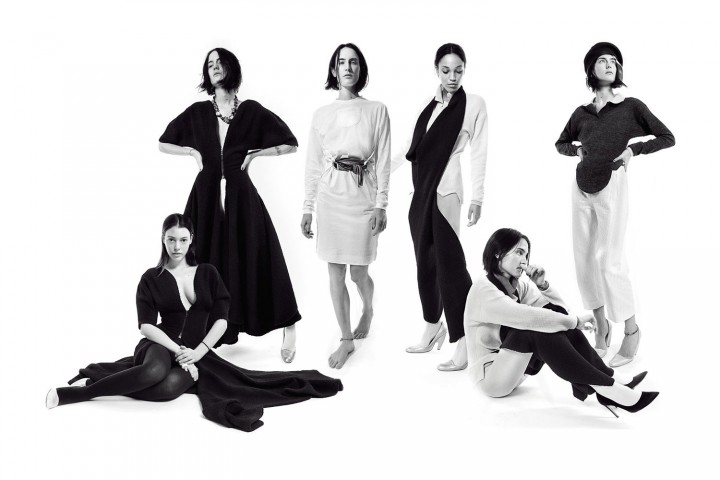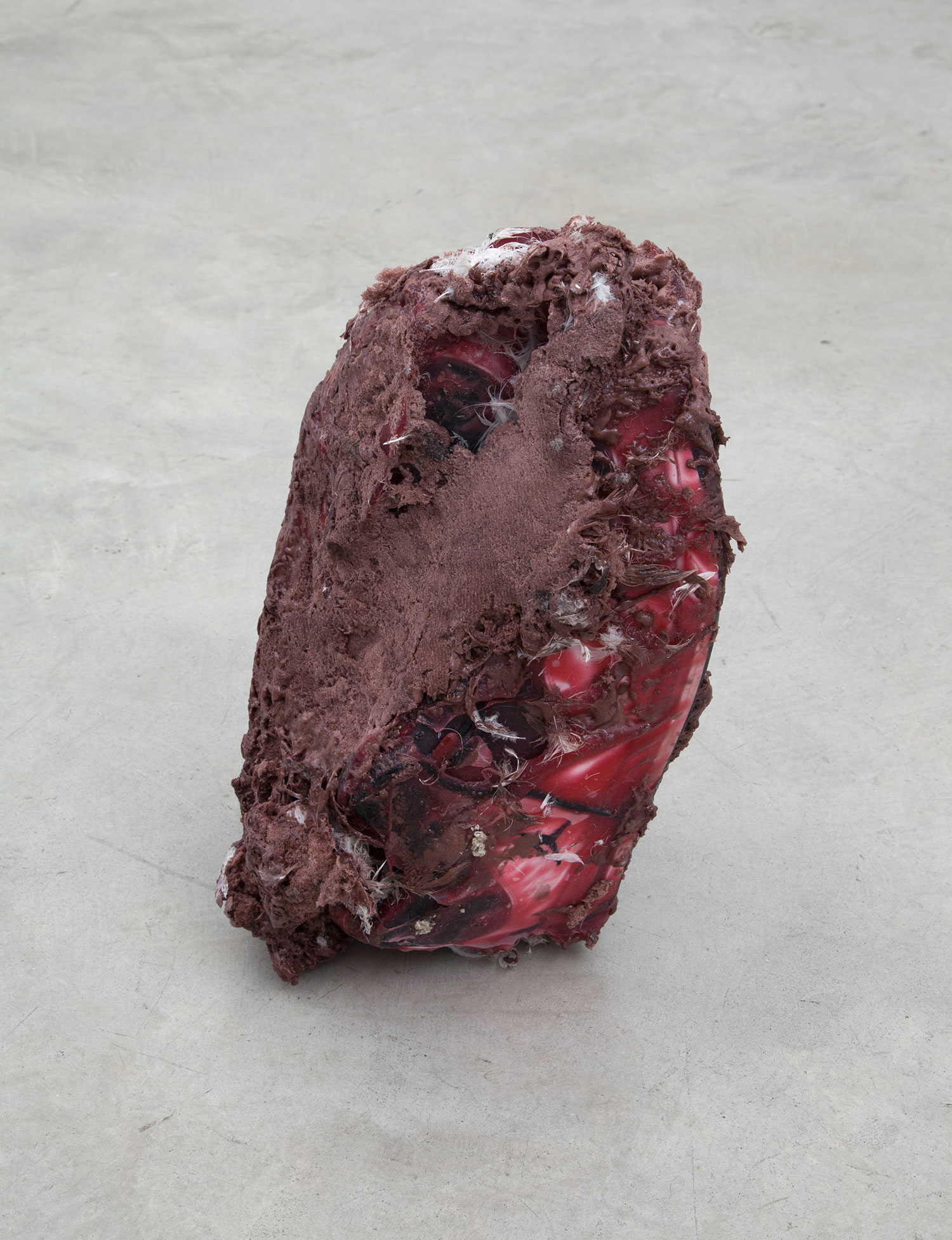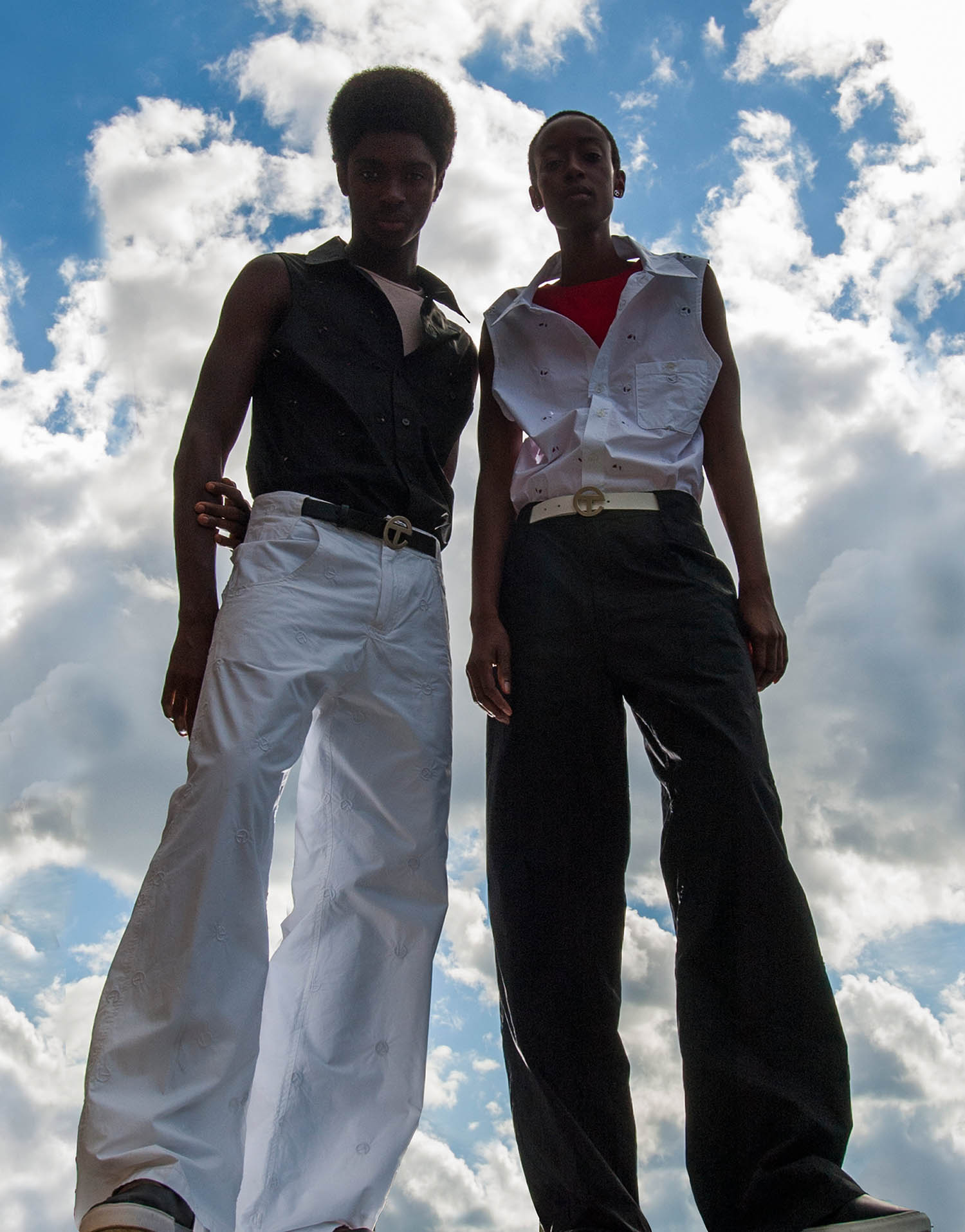Is it possible to be influential and not be constantly under the spotlight? Andre Walker has been a point of reference for many fashion designers over the last twenty years. Born in New York, partially raised in London, Walker debuted at fifteen, showing his first collection at Club Oasis in Brooklyn; that was the start of a rocambolesque career between Europe and the States. Walker has consulted for Louis Vuitton designer Kim Jones and Marc Jacobs, and has inspired numerous young designers. Loved by artists, Walker reemerged on the scene with a capsule collection for Commes des Garçons. Over e-mails between Paris and New York, Flash Art tried to catch up on his life and creative community.
For me you represent the moment when fashion experimented with new representations of beauty. In Paris, where you lived, independent magazines like Purple and Self Service extensively covered this new wave that included your work. Can you tell us how you ended up in Paris, where are you from, and where are you now?
I started living in Paris in 1991 to work on my first collection to be shown there. I’d been visiting Paris since 1982, so it was not surprising to eventually start living and working there. In 1990, the company for which I was working (Willi Wear) went bankrupt. I was floating around Naples and London for much of that year. My friend Carlos Taylor introduced me to Bjorn Amelan and started up a collection under my name. This lasted several seasons and was my entry into the international fashion circuit in a way. At the moment, I’ve been living in New York since 2005.
For a lot of professionals you represent an example of extreme integrity. But what does integrity mean in fashion? Is it about selling a product after all?
Integrity in fashion usually entails a pain in the neck. So, yes, I am an extremist in the midst of the structural and organizational traditions of fashion. Indeed, it is about selling a product, yet for me it was always more about uncovering an idea or a way to meet people. I always enjoy the curious nature of people who work in the arts and/or fashion. There is an honest awareness of the unknown and creation/creativity in general. These vocations thrive on that.
Recently under the wing of Rei Kawakubo and Adrian Joffe, you have made a comeback. How was the experience?
Once again, friendships have played an important part in building relationships. Kim Jones introduced me to Adrian, and Adrian introduced me to Rei. The experience has been such a privilege. There is always something to learn. Obviously I tremble quite a bit before, during and after proposing ideas for the collection they have invited me to create. Yet it’s so amazing to do this as a job, entertainment and a sort of therapy. In the end, there needs to be something shared, a contribution that allows all parties to feel nourished. In one year I have learned with Adrian and Rei that it is important to remain true to the original impulse that guides the thought — that creates the need and the courage for bringing the idea to life. This takes time.
You have collaborated with artists like Bjarne Melgaard and Cedric Rivrain. How did those collaborations begin? Are you preparing similar projects?
Cedric shared his home, hospitality and eventually his artwork with me for some clothing in the SS15 collection. I’ve always been floored by his beauty, the sound of his voice and the shiftless ease of his personality in general. It may just be our mutual chemistry, but from what I’ve noticed, it’s a primal resource for anyone in his environment and serves as a catalyst or introduction to his work… if that makes any sense.
Bjarne Melgaard was working on his shows at the Munch Museum in Oslo and at Galerie Thaddaeus Ropac in Paris with Bob Recine and mentioned to Bob that he would like to work with me on the one scheduled for Paris! Bob was delighted because we have a deep admiration for each other, and he introduced us both. Over some weeks of observing and three visits to Bjarne’s super-active studio, we decide to collaborate on the show together. I had mixed feelings about Bjarne’s approach and was a bit intimidated by him; also, it felt like there was not enough time to do the project well. I’d had some experience working on an installation in 1997 at the Mattress Factory in a trio show with Greer Lankton and Yayoi Kusama. The show was curated by Margery King from the Andy Warhol Museum in Pittsburgh…
Bjarne’s work terrified me, to be honest. I had this impression that all he wanted to do was devour his invited collaborators and absorb their identities. His novels and the perpetual disdain apparent in his work sincerely put the fear of God in me, and I was truly conflicted about whether to participate or not. Bob and Bjarne did a great job of convincing me in the end, even if I held true to my belief that he was surely going to slaughter us all somehow. I was so wrong. I didn’t make it to the opening, as a work task for the upcoming AW15 collection stole all of the available time on the night. Cedric and I went the following day and I was blown away. I always asked Bjarne during the early days of prepping the job, why me? His answer was, “Because you have so much integrity.” I think he has an endless amount of integrity beyond a reasonable doubt. It dawned on me the sheer courage Bjarne exercises by simply being himself and recognizing his perceptions that have led to his current peak. He is obviously fearless, kind and super confusing. In other words, crucial. Yes, I’m looking forward to more projects like this. It’s like having a laboratory exclusively for researching ideas.
Is there any room for independent designers today?
Always. We used to talk about a saturation of the market. We should not exclude a saturation of the population either. Sure, we may start to erode the current infrastructures that organize the distribution of independent designers’ work, yet there will always be a need for clothing/design, even if the industry starts to devolve otherwise.



